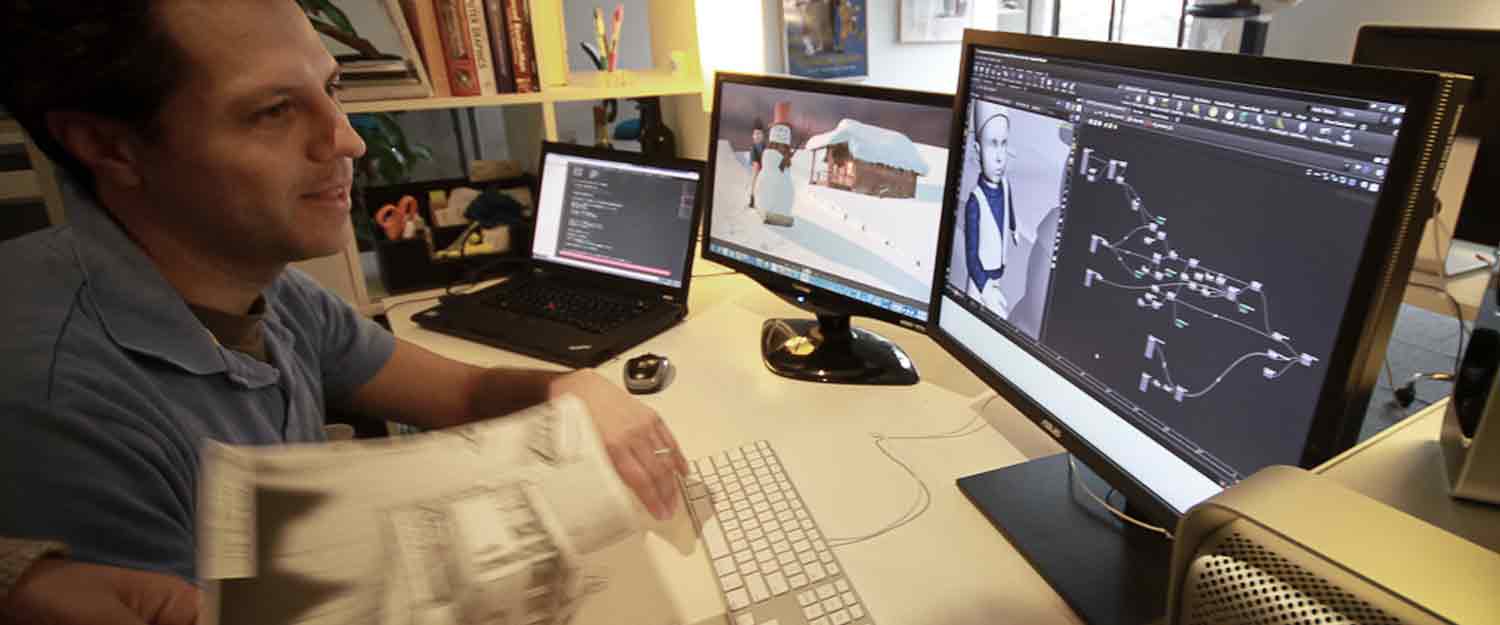
What is VFX
The role of Visual Effects in the Film Industry
VFX stand for Visual Effects and many of you may have heard about Visual Effects that are being used in the feature films. Some of you might even know Houdini VFX - software that is commonly used in the Visual Effects industry. Let's figure out what is Visual Effects Animation and its role in the film industry.
If you have watched any action, sci-fi or animated feature film—you’ve seen visual effects (VFX) animation. So…that is pretty much all of us who own a TV, phone, computer or been to a cinema in the last three decades. What you might not know is what exactly VFX contributes to the current presentation of the cinematography.
Houdini VFX for movies is used in more ways than you might think. It constitutes the majority of sceneries with explosions, snow, rain, flooding, fire, hail and lightening—all of which is either hard to film at the perfect time or too dangerous of conditions to actually film in.
VFX animation can be broken down into two commonly-used categories: Procedural Effects Simulations and Technical VFX simulations. Procedural effects simulations are used in feature films where you need to create a forest, for example, and place different sized trees in different locations, to accompany the scene’s visuals. Technical VFX simulations are used to replace expensive, difficult and potentially dangerous scenes, like with bullet shots, breaking walls, explosions, floods, fire scenes, and others.
With the steady increase of VFX use over older elements like pyrotechnics and stunts—the Visual Effects industry is in great demand of people to handle that workload. Especially because of how many hours it takes to create a single Visual Effects scene by using Houdini – software commonly used in the industry by VFX artists. See below to learn more on how to become a part of this growing industry by taking online Houdini VFX courses.
The History of VFX in Film
Visual Effects Animation is a huge part of feature films and TV shows today, as it became more effective to use VFX over manually-shot effects—but you may be surprised to learn it was first used in the early 1900s. Georges Melies (known as the father or grandfather of VFX) was the original pioneer; despite being the son of a bookmaker he had an incredible vision after accidentally discovering stop-motion. He then discovered other techniques like double exposure, fast and slow motion, dissolves and perspective trickery. Others followed his lead shortly after and the 1900s saw techniques such as tinting frames red to simulate blood from a gunshot wound. It was until 1926 however that special effects received its first film credit. By the 1930s MGM had caught on and broadened the scope of visual effects.
In the 1950s Paramount invented the ‘repeater’ technique and by the 1960s VFX was commonplace—including the iconic 1968 Planet of the Apes and Stanley Kubrick’s 2001: A Space Odyssey. In the 1970s Stephen Spielberg and George Lucas really ran with the concepts, employing optical effects, matte painting, models, makeup, animation and pyrotechnics.
The visual effects animation industry really hit its stride in the 1990s with films like Terminator 2, Titanic, Star Wars and The Matrix. Fast forward to the 2000s and there was a giant leap with films such as Avatar and The Lord of the Rings.
Every decade since has seen massive jumps in not only the volume of Visual Effects Animation but quantity as well.
The Role and Importance of VFX Today
Visual effects are now ubiquitous. They create our favourite visuals and have earned nominations for 20 films alone for the 92nd Academy awards alone.
Game of Thrones (may the incredible show rest in peace) is one of the top examples of the last couple of years. The fire-breathing dragon scenes and the wall damage scenes were incredible. As were the water, cloud, lightning simulations that truly suspended any sense of disbelief. Their ability to create a crowd without the expensive use of extras hit the nail on the head again, as did their ability to leverage virtual fire. The Game of Thrones would not have had the success it did without their VFX department.
Join the VFX Industry
VFX jobs are growing year over year, and while it is challenging work it is also rewarding for those who truly appreciate feature films. Multimedia artists, animators and other VFX professionals earn an average of $72,000 annually—but more importantly, they love what they do.
Training to become an effects professional at a Vancouver Animation School (VANAS) by taking an online Houdini Visual Effects course has become easier than ever. You can now take an introduction to VFX course online to see if it is right for you, it is a VANAS one-month online certificate program. For those who feel the draw towards a VFX career, there is a one-year diploma program to teach you what you need to get for your first industry-related job. The career advances after your initial hire are endless—especially for those with a love of the craft and a solid work ethic.
VFX professionals earn an average of $72,000 USD annually
A career in VFX is something you can train to do in a short period of time, either online or in person. Your first step is to inquire about the VANAS Houdini VFX program that is right for you. From there you enroll in a VANAS program, complete the required VFX course components and then begin looking for a career in the Visual Effects industry. VANAS students have a number of resources at their disposal to situate themselves in the field. Your growth trajectory in the industry will only be limited by your creativity and desire to succeed—because the Visual Effects and Feature Film industries will only continuously grow throughout our lifetimes.







